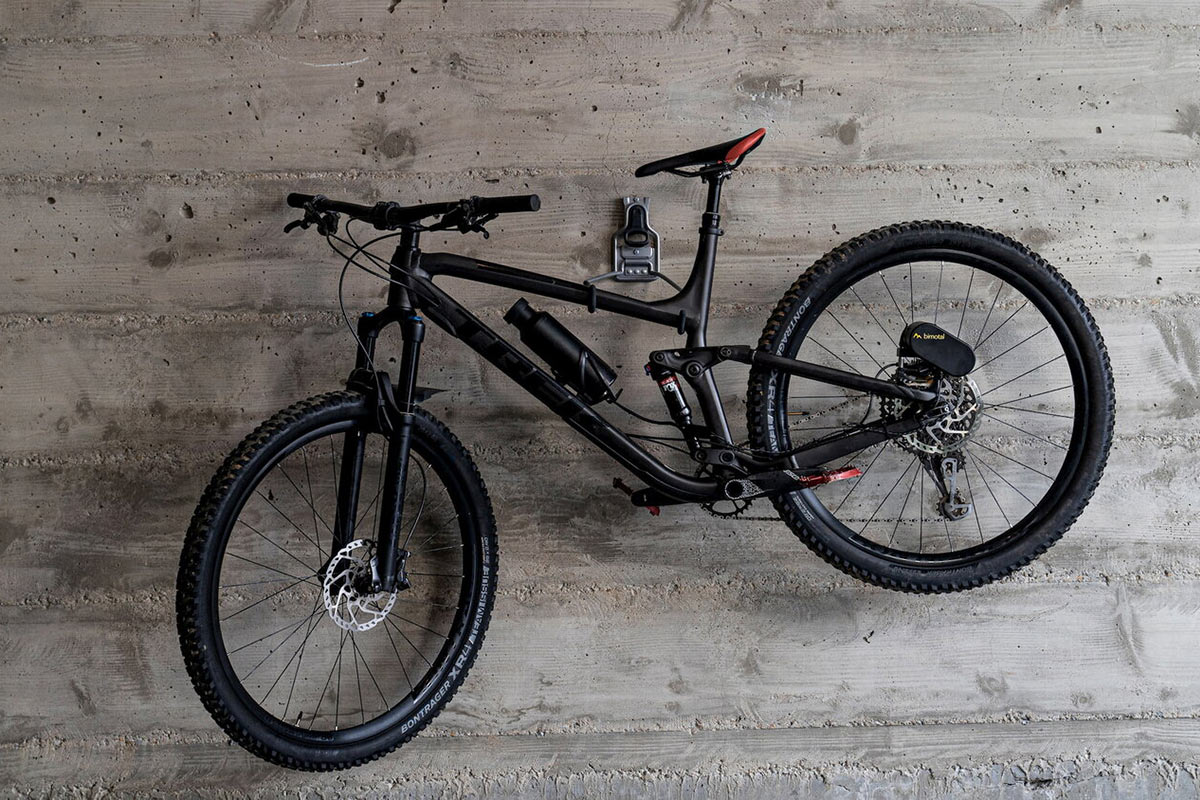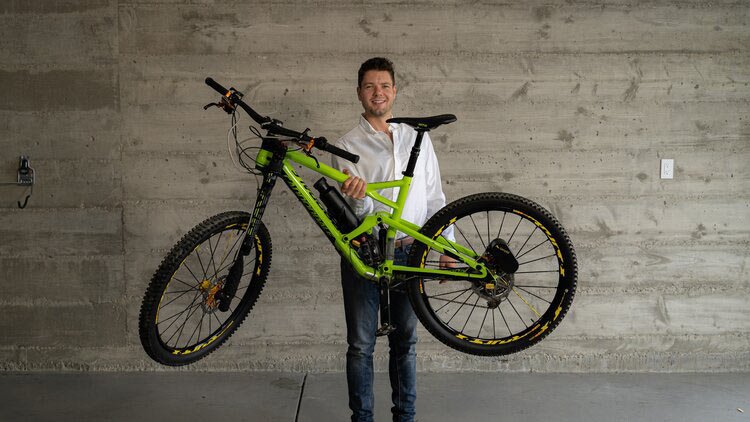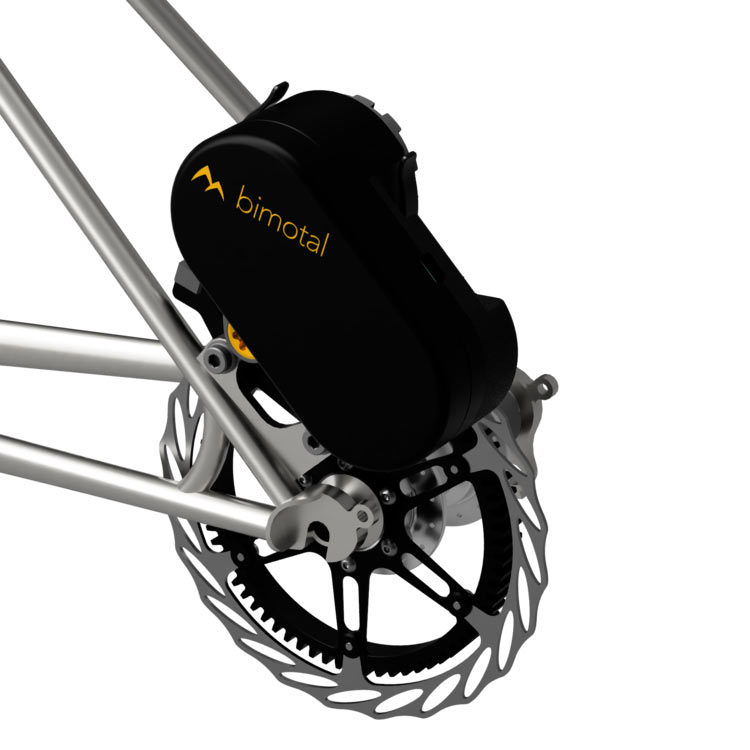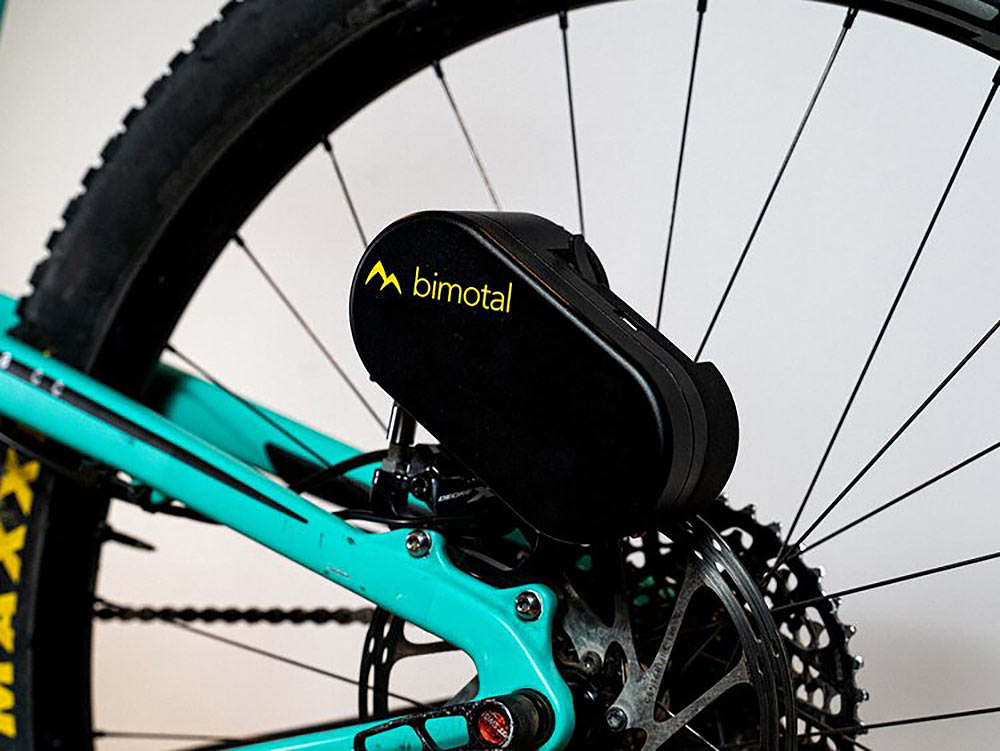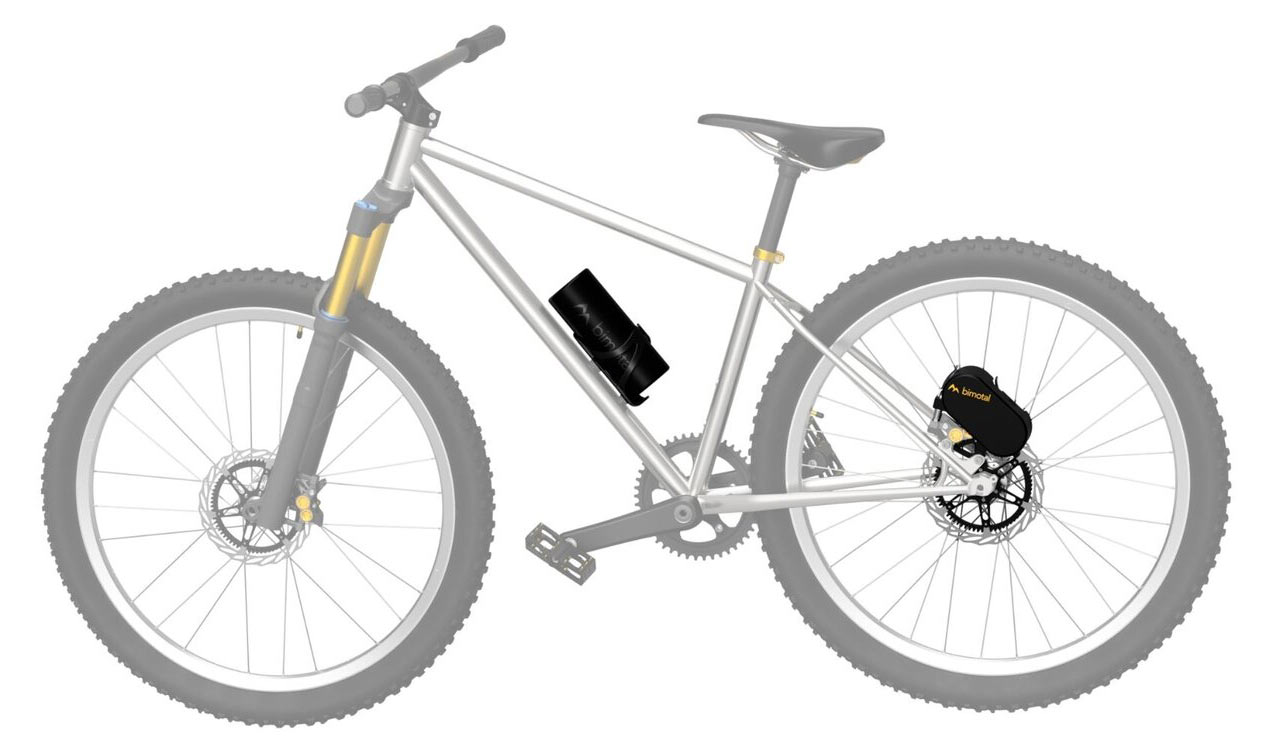We all have our favorite bike, and giving up that love affair to get an e-bike is no small decision. And no small cost. But Bimotal lets you add a little electric assist to any bike, then quickly remove it when it’s not needed.
Not only does it require virtually no modification to your bike, but it doesn’t add much weight, either. Here’s what you need to know about this universal e-bike upgrade…
Bimotal add-on e-bike motor specs
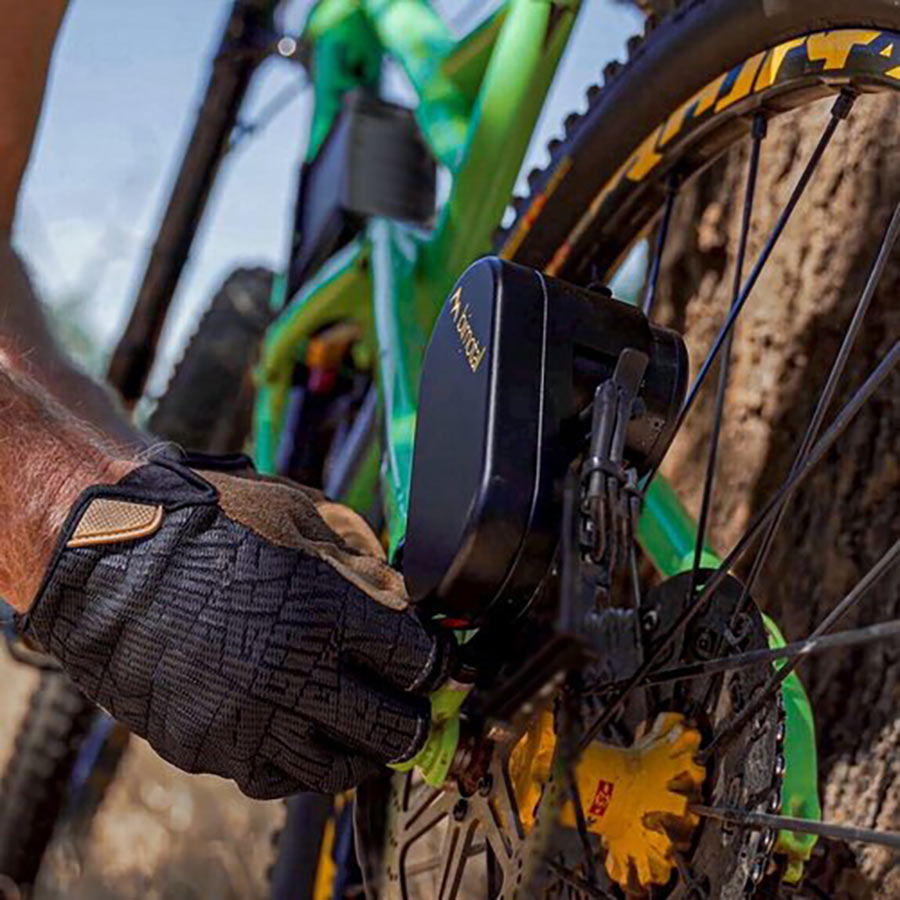
The Bimotal Elevate uses its own toothed brake rotor to engage with a small, self-contained motor unit driving it. It’s powered by a water-bottle-sized battery, and for starters, it’s activated by a throttle. Stay with me.
The goal is to add assist to your pedaling, though as is, you could use it to just cruise without pedaling. Founder Toby Ricco says he mainly uses it to shuttle, and is well aware of the legal limitations a throttle-only setup provides for mountain bikes and some cities.
So, he’s working on the pedal-assist capability and expects to have it working before the first units ship in early 2021. The Bimotal Elevate has Bluetooth, letting it communicate with an app, so it could be as simple as linking it to a Bluetooth (or possibly ANT+) cadence sensor.
Great, but who’s Toby?
Toby came from Tesla, where he worked on power electronics for the Model 3, Model S and Model X while tinkering on the design for Bimotal.
Joining him are Lauren Deunsing, VP of operations, was with NICA for years and brings bike industry experience, and Jason Roesslein, director of product, who also comes from Tesla and SpaceX and has a long background in cycling.
Bimotal specs & weight
The motor is able to deliver a constant 50Nm of torque, with a max of 100Nm. And it’s turning that into forward motion with a 30:1 gear ratio via hidden reductions inside its shell. That’ll get you up to 28mph on flat sections, which is equivalent to a Class 3 e-bike.
By the time it ships, it’ll have the ability to select the tune you want or need based on the situation. Many eMTB-friendly trails still limit bikes to Class 1, which has a 20mph cap on its assist. So, you’d be able to pull up the app, set it to Class 1, then hit the dirt.
Toby says it’ll probably have multiple modes and options, so you can customize the performance to your needs.
The 750W motor unit is about 1kg, which is a fifth or less of the weight of most hub-based motors. That means there’s not a ton more unsprung weight being added, but definitely some. Fortunately, you can pop it on to get up the mountain, then pop it off for the descents…all in about 10 seconds.
The 250Wh battery is 1.5kg, and hardware and harness and stuff is about 200g. All in, it adds about 2.7kg (5.9lb) to your bike. The brake rotor is 175g, so not too much heavier than a standard 180mm 6-bolt rotor. They could add a CenterLock rotor in the future.
Range is estimated between 15 to 30 miles, depending on use.
What does it do to the brakes?
One concern is heat, as you certainly don’t want motor heat affecting rear brake performance. They say the heat is almost immeasurable, as the motor is physically separate from the rotor, and it’s several gears away from the ones that finally connect with the rotor.
The current design has no drag, as the motor just spins freely when not activated. But, they’re working on a way to switch on regenerative power, letting you charge the battery on the descents.
Will it work with my bike?
Well, it’s important to know that it’s not actually available yet. They’re still working out a few details, but the basic concept is set.
The most important requirement is that you need to have an externally (seatstay) mounted rear brake caliper. It works with most any brand and style of hydraulic brake. To install, you simply remove the standard M6 bolts and swap them for their bolts with extended studs. The motor unit slides onto and clamps into those.
During installation, it’s tuned to match its output with your wheel size so that it meets Class 1 or 3 speed limitations. Its position is set by adjusting the height of the bolt studs, and they want the pros doing that for you. Which is why, if you want it, you’ll get it through Velofix, who’s trained to do this correctly.
Yes, there are some very obvious ways you could “hack” it to go faster. Look for OTA firmware updates through the app to keep it humming along with new options as they grow. Retail is planned at $1,950, available in early 2021. Preorders are open now.
